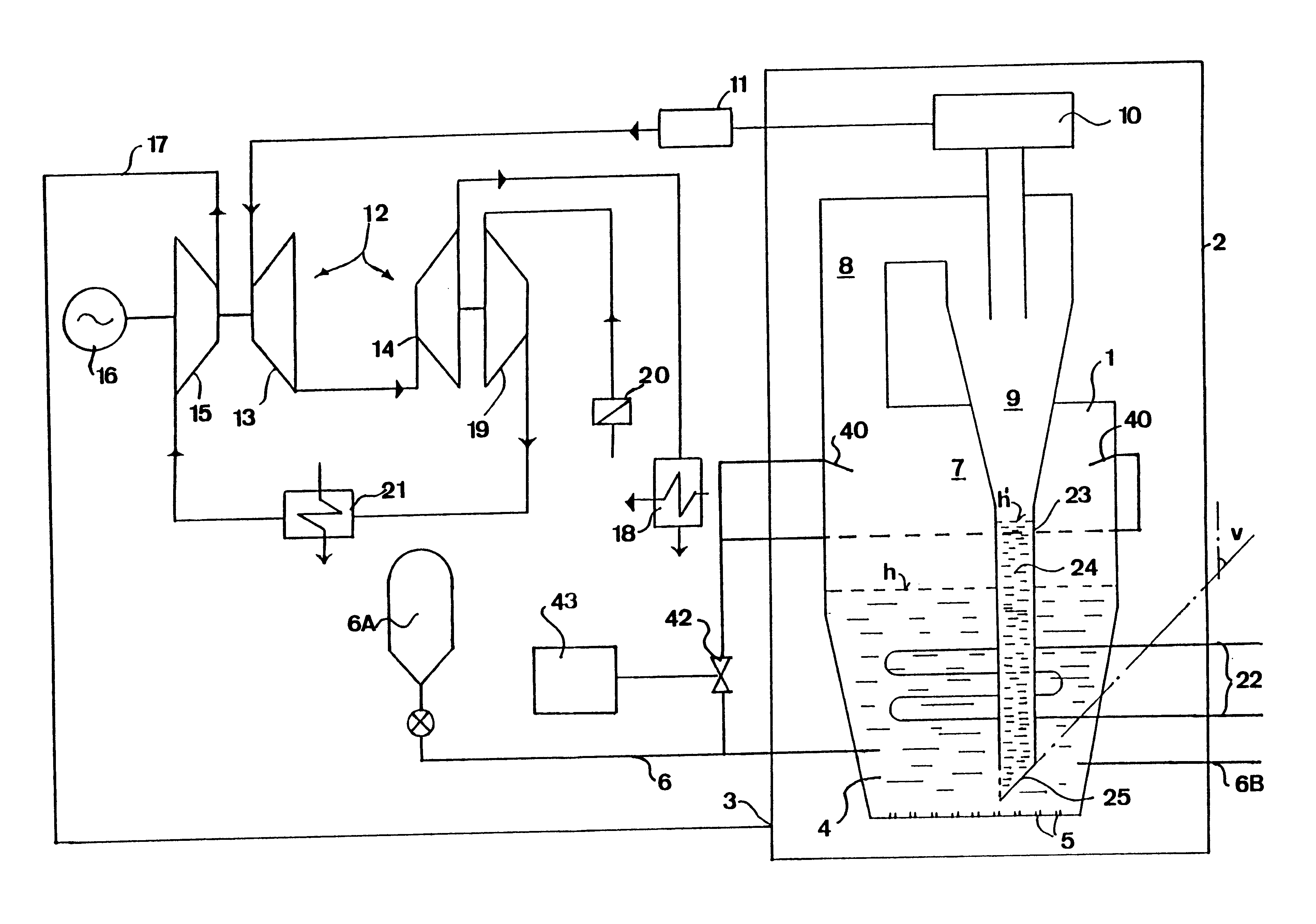Method and apparatus for burning fuel in the free board of a pressurized fluidized bed with solids recirculation
- Summary
- Abstract
- Description
- Claims
- Application Information
AI Technical Summary
Benefits of technology
Problems solved by technology
Method used
Image
Examples
Embodiment Construction
The invention will now be explained with a reference to a so-called PFBC-power plant (pressurized, fluidized bed combustion). However, it should be noted that the invention also is applicable to other types of plants, in particular combustion plants without power production. A PFBC-power plant, i.e. a plant for the combustion of particulate fuel in a pressurized, fluidized bed, is schematically disclosed in FIG. 1. The plant comprises a combustion chamber 1 being housed in a pressure vessel 2, having a volume in the order of 10.sup.4 m.sup.3 and which may be pressurized to, for example, between 7 and 30 bars (abs). Compressed oxygen-containing gas, in the example disclosed here, is supplied to the pressure vessel 2 at 3 for pressurizing the combustion chamber 1 and for fluidizing a bed 4 in the combustion chamber 1. The compressed air is supplied to the combustion chamber 1 via schematically indicated fluidizing nozzles 5 being provided in the bottom of the combustion chamber 1 for ...
PUM
 Login to View More
Login to View More Abstract
Description
Claims
Application Information
 Login to View More
Login to View More - R&D
- Intellectual Property
- Life Sciences
- Materials
- Tech Scout
- Unparalleled Data Quality
- Higher Quality Content
- 60% Fewer Hallucinations
Browse by: Latest US Patents, China's latest patents, Technical Efficacy Thesaurus, Application Domain, Technology Topic, Popular Technical Reports.
© 2025 PatSnap. All rights reserved.Legal|Privacy policy|Modern Slavery Act Transparency Statement|Sitemap|About US| Contact US: help@patsnap.com



